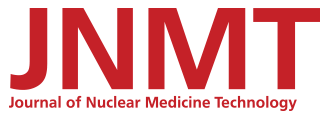Abstract
Previous studies have suggested that by slight modification of the current formulas for iodine-131 (131I) orthoiodohippurate (OIH) effective renal plasma flow (ERPF) quantitation, technetium-99m (99mTc) mercaptoacetyltriglycine (MAG3) can be substituted for 131I-OIH in the quantitative renal function protocol. This study was undertaken to compare two different camera techniques that do not require blood samples. The Schlegel camera method, modified by the introduction of 0.67 as a correction factor, comprised one technique. In the other technique, the renal clearance (RC) was determined and then converted to ERPF. The results were then compared with the Tauxe (TX) method. Fifty patients with varying degrees of renal impairment were studied. Our comparative results support the concept that a camera technique can be applied to 99mTc-MAG3 to determine ERPF, with results similar to those obtained by the Tauxe method (p > 0.01).
Footnotes
↵Editor’s note: This paper was selected by the Education and Research Foundation (ERF) of The Society of Nuclear Medicine to receive the ERF’s 1993 Nuclear Medicine Technologist Award. The monetary award was made possible by donations to the ERF.







